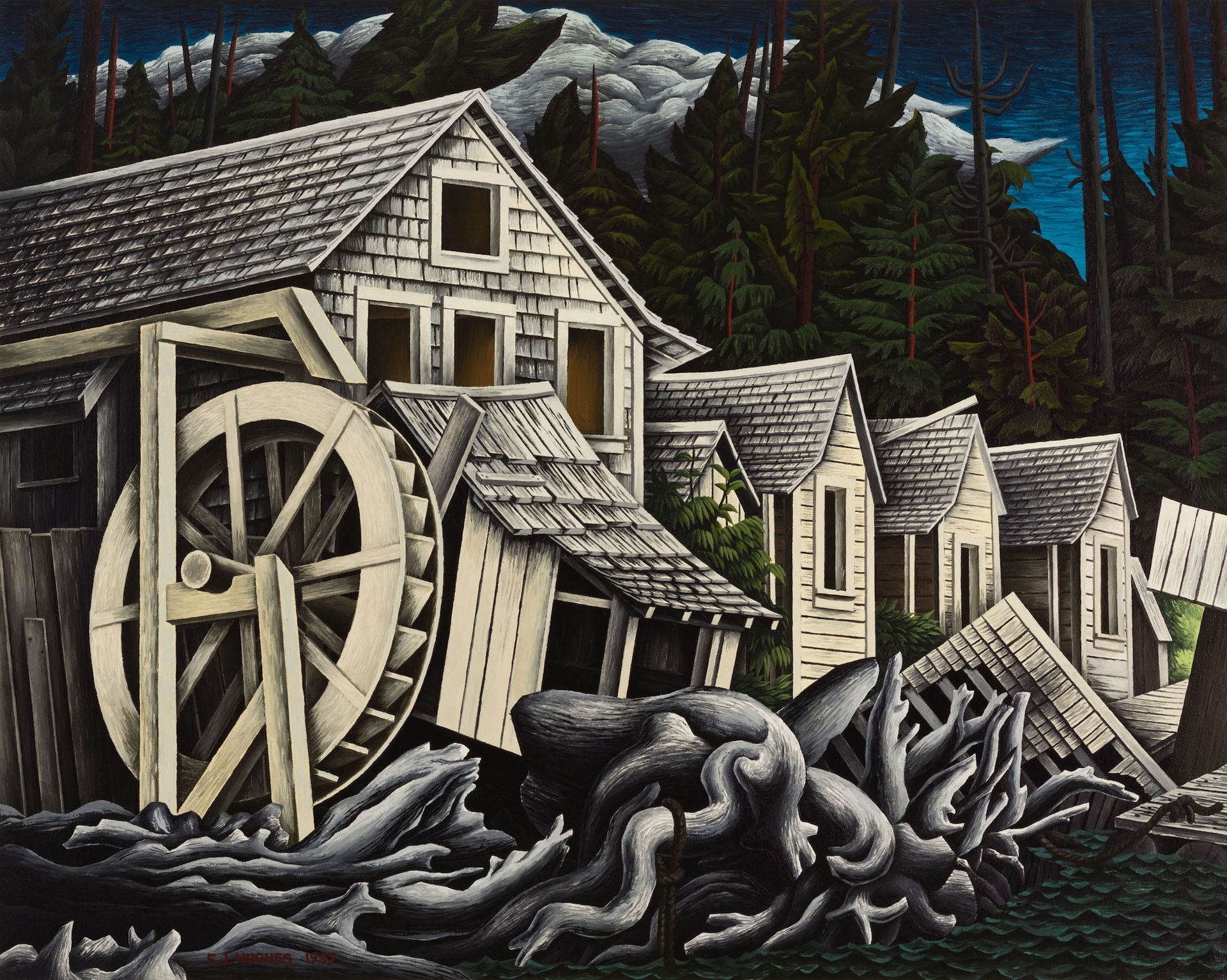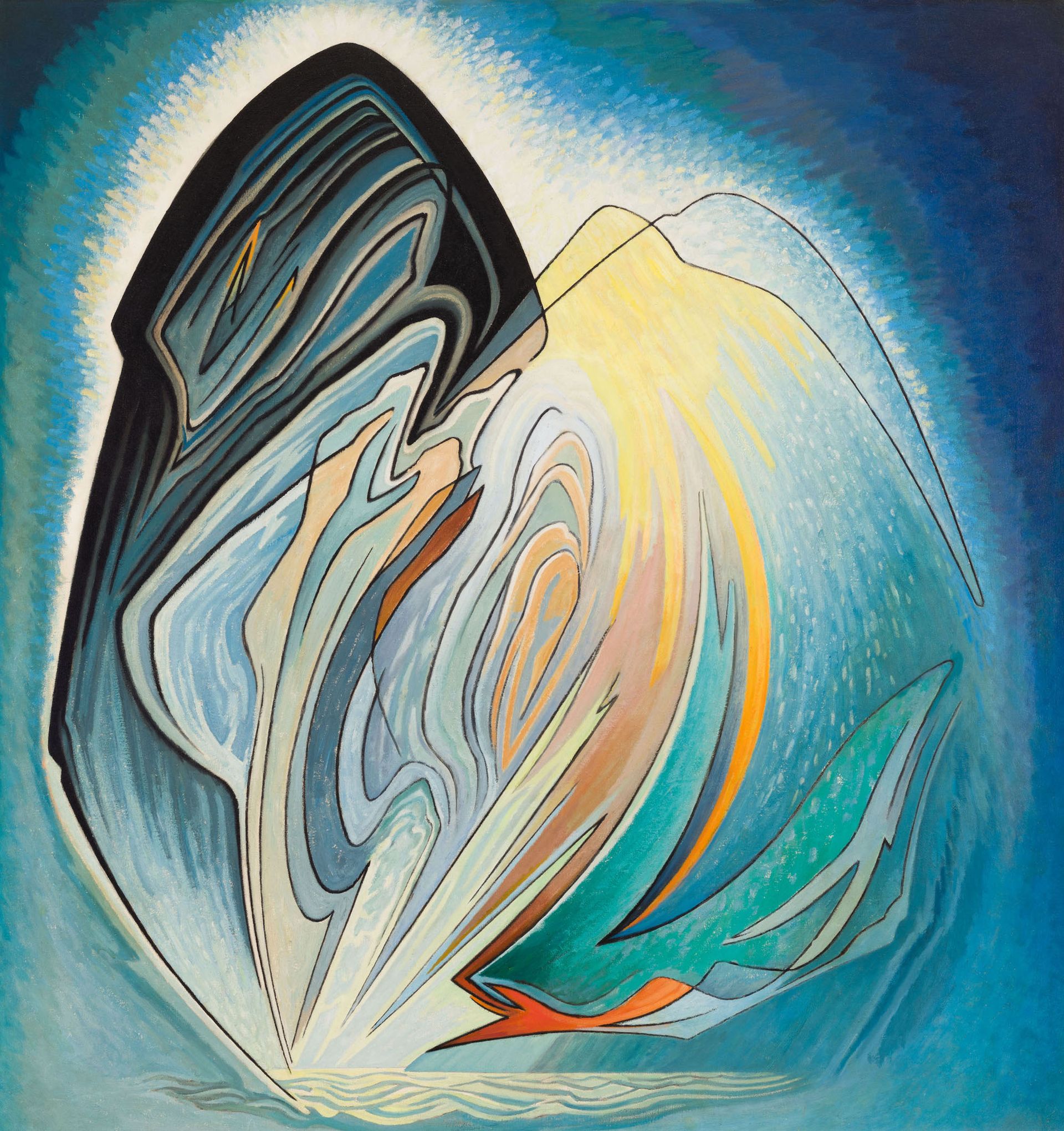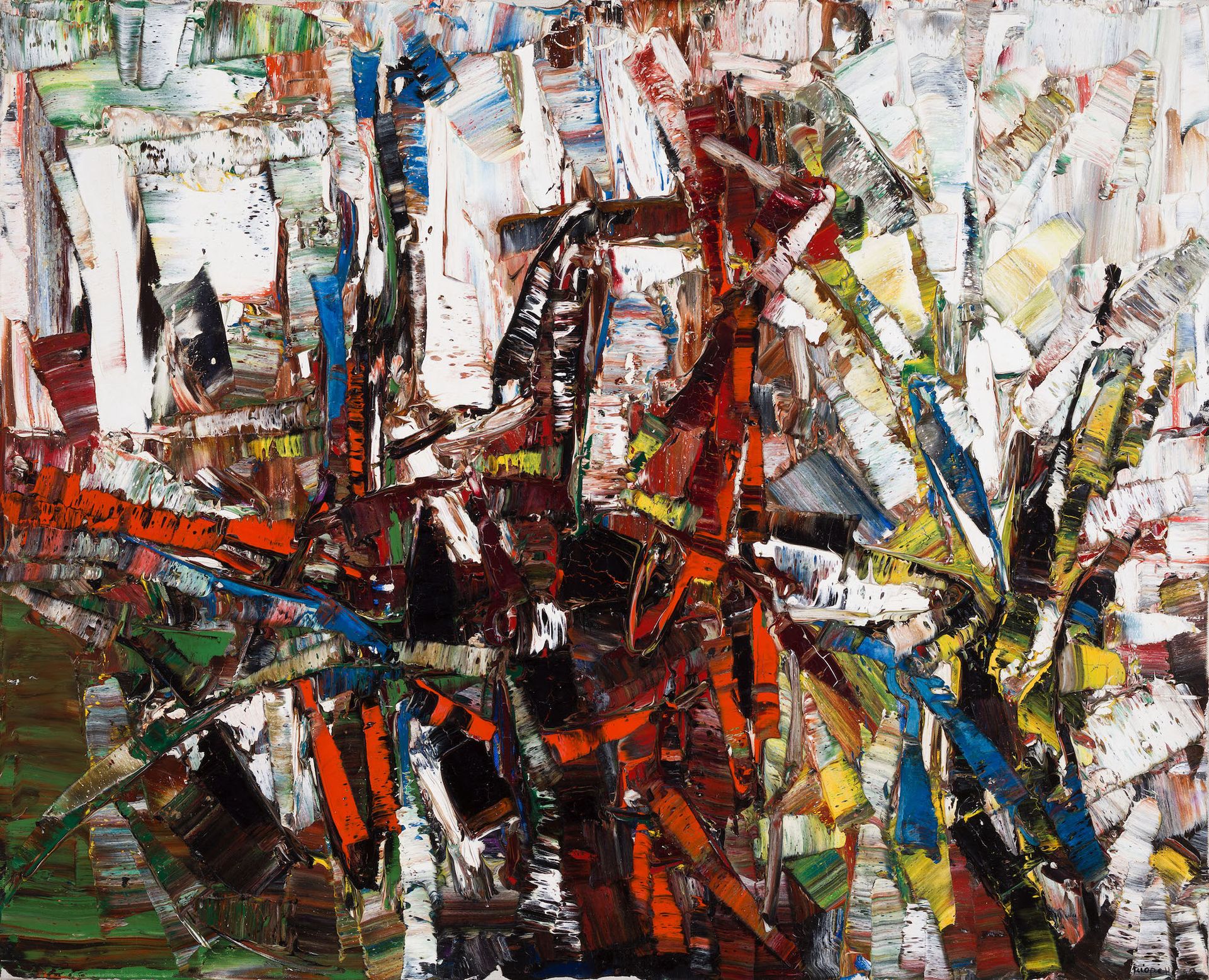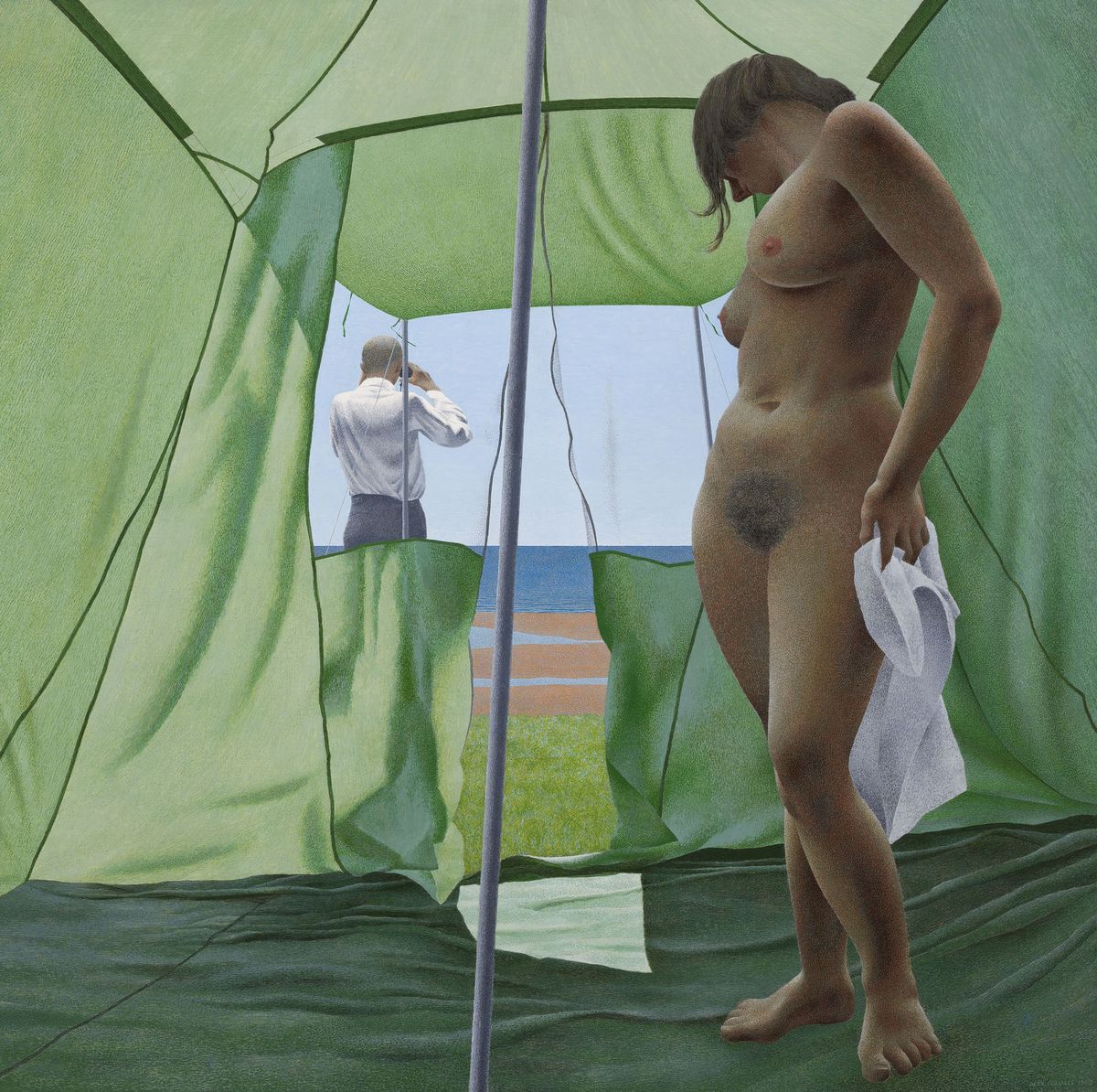Expectations were surpassed at Heffel’s marquee spring auctions in Toronto on Thursday night (25 May). The sales brought in a total of C$17m, or $12.4m (including fees), around the top end of the auction house’s pre-sale estimate of between C$10m and C$15m (estimates do not include auction house premiums).
Alex Colville’s celebrated June Noon (1963) led the parade, selling for C$2.1m with fees ($1.5m). The auctioneering team of David and Robert Heffel noted more than once that Canadian dollars were the order of the day at the sale, notable as the US dollar is currently valued at around 35% more. Colville’s 30 inch by 30 inch composition depicts the artist and his wife Rhoda, he looking out to sea, she nude in a tent. It had spent around 50 years in a private collection in Germany after being featured at the 1966 Venice Biennale.

E.J. Hughes, Abandoned Village, Rivers Inlet, BC, 1947 Courtesy Heffel
The Colville work went on the block late in the first sale of the evening, which focused on post-war and contemporary art. Prior to that, E.J. Hughes’s painting Abandoned Village, Rivers Inlet, BC (1947) fetched C$1,801,250 with fees ($1.3m), just topping its high estimate. It was consigned by its sole owner, the Alma Mater Society of the University of British Columbia, which acquired it in 1948.
Another highlight of the early session was Lawren Harris’s Northern Image (1952), which easily topped its high estimate of C$550,000, selling for a hammer price of C$850,000, or just over C$1m with fees ($750,000). According to a Heffel spokesperson, that result set a record for a Harris abstraction at auction. At a 2016 Heffel sale, Harris’s 1926 canvas Mountain Forms set a new Canadian art market standard when it was knocked down at a whopping C$11.2m ($8.3m).

Lawren Harris, Northern Image, 1952 Courtesy Heffel
There was considerable interest in four works by Automatist Jean Paul Riopelle, understandable as this year marks the centenary of his birth—with attendant celebrations on either side of the Atlantic. His 1958 oil on canvas Foison went for C$661,250 with premium ($485,000), nearly twice its high estimate, while his 1957 Sans titre, which had shown at the Museum of Modern Art, was acquired at that same price. It was snagged late by a woman bidding in the salesroom—there were many online and telephone bidders competing—surprising auctioneer David Heffel. “She came out of nowhere,” he said.

Jean Paul Riopelle, Foison, 1958 Courtesy Heffel
Another big earner was Jean Paul Lemieux’s 1963 portrait Samuel, which more than doubled its low estimate to sell for just over C$500,000 including fees ($367,000). Jack Bush’s 1973 abstraction Plume Totem boasted similar numbers.
Andy Warhol was again a presence after the record-shattering sale of a Queen Elizabeth II print at Heffel last November. The pop art giant set what Heffel called “another global record” last night, this time for an edition of his 1983 screenprint Bald Eagle, from Endangered Species , which went for just over C$300,000 with fees ($221,000), twice its high estimate. Notably, the bald eagle has since been removed from the endangered list—it was one of ten species depicted in the series—and is thriving again, like the market for Warhol’s prints.

Emily Carr, Sitka Totem Pole, 1912 Courtesy Heffel
The second session of the evening, focused on Canadian, Impressionist and modern art, got off to a strong start when Emily Carr’s 1912 canvas Sitka Totem Pole, which had been seen by the general public only once in the past century, took in C$1.2m including fees ($882,000). A Heffel spokesperson noted that its value had increased by a factor of around 3,000 since the painting had last changed hands, for C$400. Another Carr oil, Pine Tree in Forest, surpassed expectations when it went for C$420,000 with fees ($308,000).
Other big numbers were earned by the Group of Seven’s Arthur Lismer, whose painting An Ontario Village (1923) took in C$750,000 with fees ($550,000). A work by fellow group member A.Y. Jackson, Emileville (1913), also surpassed expectations, realising C$570,000 with fees ($418,000), almost four times its low estimate.


